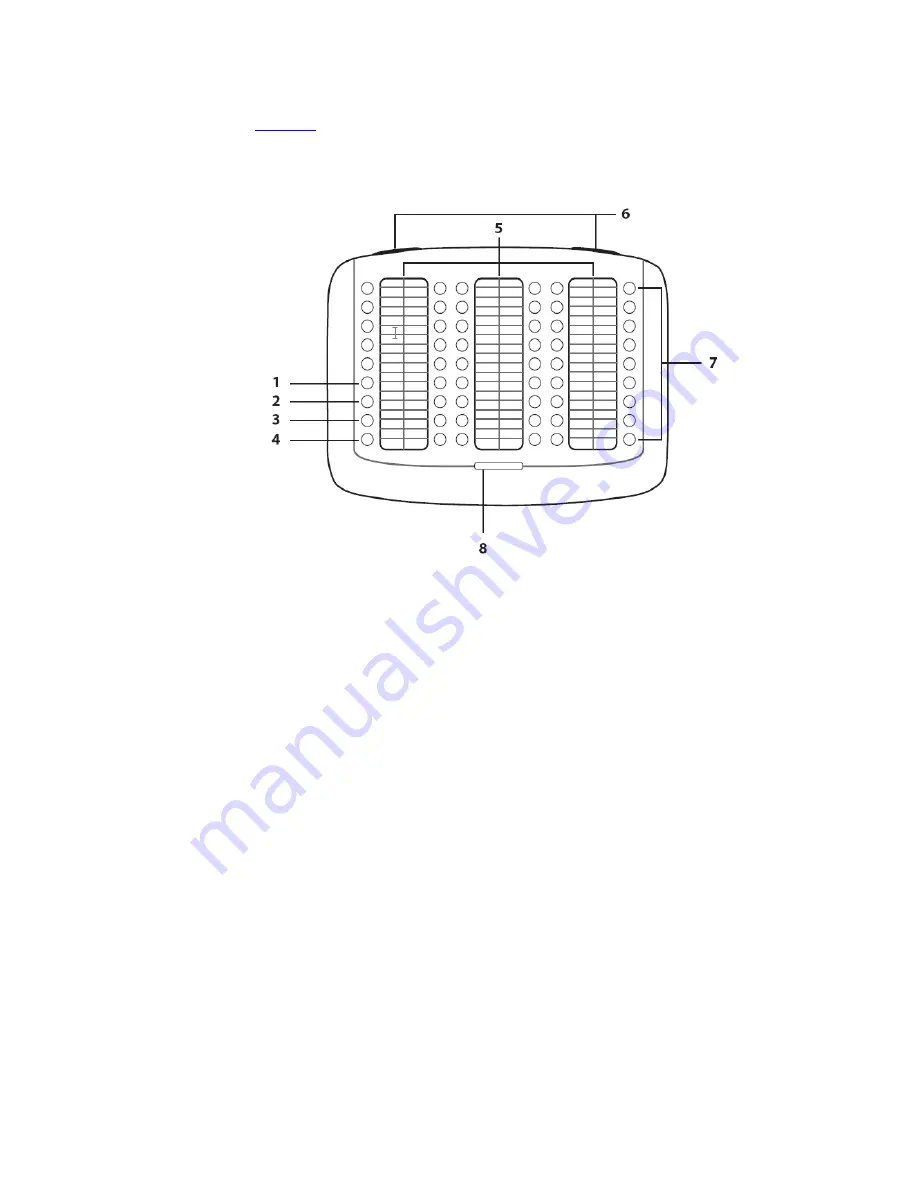
81
Your administrator also maps telephone extensions to Access buttons by using the VCX
Administrator web interface.
Figure 11
and the text that follows it describe the features on the 3105 Attendant
Console.
Figure 11
3105 Attendant Console
1
Transfer button
— Enables you to send a call to another telephone. See Transferring a
Call.
2
Hold button
— Places a caller on hold. See Putting a Call on Hold.
3
Conference button
—
Allows you to set up a 6-party conference call. See Setting up a
Conference Call.
4
Call Park button
—
Places a call in a “holding pattern” so that it can be retrieved from
any other telephone on the system. See Call Park.
Attendant Serial Call button
—
Enables you to send a call to another telephone like
Transfer, but the call rings back to you when the destination hangs up. You can perform
another transfer or other actions. Not mapped to a button by default, your administrator
can map Attendant Serial Call to any of the four buttons. See Serial Transfer.
5
Labels
— You can print labels for your Attendant Console by using the label maker
utility, which is available through the 3Com web site. See Printing Labels.
6
Label cover tabs
— Allow you to unsnap the plastic cover to insert labels.
7
Access buttons —
If your administrator has mapped an extension to an Access button,
a light next to the button indicates whether the line is available or in use, or whether an
assigned feature is enabled. See Attendant Console Status Lights.
Your administrator uses the VCX Administrator web interface to map telephone extensions to
Access button numbers. The interface numbers each button. For example, the
administrator may say that extension 4001 is assigned to button 1, extension 4002 is
assigned to button 2, and so on. On the Attendant Console, the buttons are numbered from top
to bottom, starting in the top left corner. (However, no number physically appears next to a
button.)























